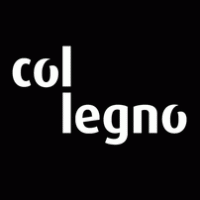
Thus, it is no surprise that Wolfgang Mitterer is one of the hallmarks of the dazzling enterprise, since he embodies this rich diversity of the label’s claim with his unique blend of composition and improvisation, acoustic instruments and electronics as well as his creations from various styles of music. Or Franz Koglmann, a jazz trumpeter and composer who has devoted himself to different areas of the legacy of Joseph Haydn or the Russian writer Vladimir Nabokov. Just like their signed artists, the two artistic directors of the label are also active in various fields: Gustav Kuhn works as the artistic director of the Haydn Orchestra of Bolzano and Trento, as well as the Tyrolean Festival Erl and has already recorded various symphonies of Beethoven, Brahms and Schumann and Wagner’s operas in these roles. Andreas Schett, responsible for the exterior and musical chromatic characteristics as the label’s graphic designer, also crosses various styles and art sectors when he arrays songs by Brahms, Schubert and Mahler in new acoustic guise with his music ensemble Franui. Here, as in other productions, elements of traditional folk music are part of the creative process. Quadrat:sch, one of the more recent productions, is a good example for this mixing of styles, as well as Tirolirium. The label also occupies a niche with read recordings of opera libretti of Wagner’s Ring and Hofmannsthal’s Elektra, and also other unusual audio books as those of Günter Brus.
Meanwhile the collaborations with festivals has also been proven useful, including of course the Tyrolean Festival Erl, but also the Salzburg Festival, Wien Modern, the Darmstadt summer courses or Donaueschingen Music Festival, only to name a few. Of course the musicians want to be marketed, but the audience also wants to be attended to. This raises the urgent question of how a label can actually survive in a time when the downfall of the CD has been predicted. It is certainly necessary to have a good dose of idealism in these times, but the label does not want to restrict itself to one medium: “We do not produce CDs, we produce music” is one of their slogans. The label owners see it as their mission to convey and document the colorful musical on goings and make it accessible for the present and for the future. For now the CD seems to be the most practicable and mass appealing medium, but the label is also eagerly working on the distribution over the Internet and other new business ideas, which will hopefully continue to surprise us in the future as well as the many more brilliant sonic productions that are yet to be released.
Doris Weberberger
translated from German
http://www.col-legno.com/
